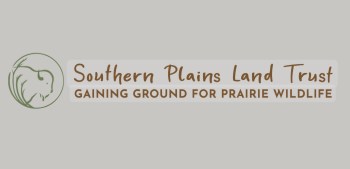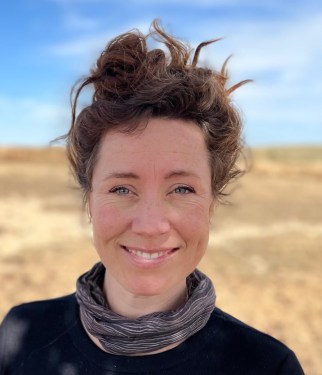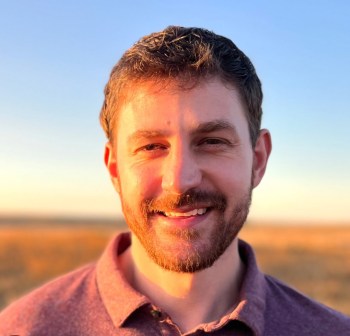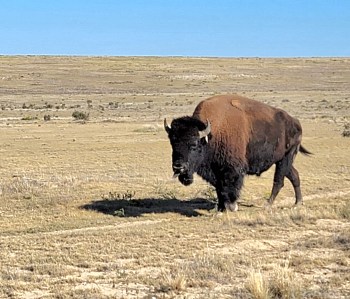Prairie dogs are considered by many to be nothing more than a nuisance. However, they are the reason behind what has become an immense nature preserve here in Southeast Colorado. The Southern Plains Land Trust (SPLT) came to be in 1998 by individuals who were concerned about the alarming decrease in habitat for the creature as well as countless other animal species and native plants. SPLT was founded on the principle that one of the best ways to protect prairie wildlife is to simply buy the land under their feet. These individuals pooled their money and started buying land for just such a use. The Trust purchases large parcels of land with the sole purpose of providing a protected refuge to the wide variety of grassland animals and plants on what has been dubbed “America’s Serengeti”.


I only recently learned about both SPLT and the land they own south and west of Lamar and I’m finding that many others in Lamar are also unaware that it exists within a 45-minute drive. I’m writing this series of articles about all that SPLT has done and is doing because I feel these preserves play a vital role in preserving the native landscape and wildlife. I also feel it is imperative that future generations are educated and aware of this importance and how it weaves together the past, present and future of this rich tapestry of land that is SE Colorado. Hopefully, these next generations will build on what has already been accomplished here.
How does the lowly prairie dog fit into this? Prairie dogs are considered a “keystone species” because they provide food and habitat for over 120 other species of animals, including hawks, eagles and perhaps most importantly, for the near-extinct black-footed ferret. Their role in the repopulation of the ferret will be highlighted in a follow-up article. Another keystone species is the bison and their ability to generate biodiversity. Unlike cattle, as they graze, they eat a variety of herbaceous grasses while avoiding other woody vegetation, creating a mosaic pattern of grazed and ungrazed areas. Some taller grasses remain while others are chewed short, allowing new shoots to sprout up. These varying heights provide refuge for several small animals and birds, including the burrowing owl. Fun fact: pound for pound, rabbits eat more than bison!
To date, SPLT owns and protects over 60,000 acres, divided into 3 preserves. The first land purchase the group made was “Fresh Tracks” in Baca County, a 1,280-acre parcel (now expanded to 2,560 acres). This area is home to pronghorn, coyotes, badgers, raptors and prairie dogs, as well as several native plants.
SPLT’s next purchase was a 2,240-acre property they named Raven’s Nest Nature Preserve (so named for the Chihuahuan ravens with nests on the property) in 2013. It has expanded to its present size of 4,800 acres near Heartland Ranch. Raven’s Nest includes a long stretch of Rule Creek and its streams support plains leopard frogs, tiger salamanders and other water-dwelling species in addition to prairie dogs, coyotes, swift foxes, hawks and burrowing owls.
The third preserve, Heartland Ranch, was purchased in 2015 and has seen significant expansions in recent years. Heartland is home to reintroduced bison, pronghorn, mule deer and prairie elk as well as prairie dogs and black-footed ferrets. Together, these three preserves encompass over 60,000 acres of native grassland. SPLT directly manages over 50,000 acres and holds conservation easements on the remaining acres. Heartland Ranch is the area I toured on my visit and is the largest of the three, encompassing 43,000 acres. This shortgrass prairie is also among the most threatened habitats in North America with 50% having already been lost due to human development. On the SPLT preserves, native grasses thrive and wildlife get space to roam and flourish in the protected environment.


Judith Westveer, PhD.
Upon my arrival at Heartland Ranch, I was warmly greeted by Judith Westveer, Assistant Director of SPLT and her husband, Henry Pollack, the Executive Director. Judith, a native of the Netherlands, holds a PhD from the University of Amsterdam as a Wetland Restoration Ecologist. She has worked for various environmental non-profit organizations in the Peruvian Amazon and has done freelance science communication work for the World Wildlife Foundation. She says she was born a city girl in the Netherlands who never would have imagined living on the prairie in Colorado, but says she loves it here and has enjoyed watching the seasons change during the year they have been living at Heartland Ranch. Henry earned his PhD from the University of Illinois in Ecology, Evolution and Conservation Biology with an emphasis on the biology of tropical birds. They met while both were working for nonprofit groups in Peru. In speaking to Henry, I learned that he has globe-hopped in his journey, working as a contractor for the Department of Defense in Guam and spending several months throughout his doctorate program in Panama. He originally wanted to settle into the world of academia as a college professor but quickly became frustrated with both the grueling process of applying as well as feeling that the academic world “sits in their ivory towers and the message doesn’t get out” while appearing to save the world. He wanted to make a real difference and after working on a New Mexico ranch that was ecological and working with re-wilding, he instantly knew what he wanted to do. The job at SPLT “popped up” during his time on the ranch and turned out to be the perfect fit. While discussing his potential employment, he was told that the group wanted to look for someone to assist him; someone who had experience in conservation biology. He responded with “Well, my wife is a conservation biologist with a PhD” and that sealed the deal.


Henry Pollack, PhD.
With Judith driving, we set out on a tour of Heartland Ranch. She spoke about the bison reintroduction program but warned that due to the vast size of the ranch, we may well not see any on this day. However, soon thereafter we saw a single bison nearby, walking toward us on a well-worn trail through the prairie. There was a large herd visible in the background. She said I was welcome to take pictures of it but to remember to keep the truck between it and myself. After snapping a picture and returning to the safety of the truck, we were treated to a closeup look as it brushed along the side of the truck, eyeing us closely before continuing on its journey. I learned that this growing bison herd numbers approximately 150, with 30 calves born just this year. The bison were reintroduced to SPLT in 2015. These huge animals nearly became extinct during the 19th century – once numbering around 60 million, only 541 remained by 1890. As an example of the symbiotic relationships the various wildlife share, as the bison roll on the ground during the dirt baths they enjoy taking, they create depressions in the dirt called “wallows”. These wallows then fill with rainwater and offer breeding pools for amphibians and sources of drinking water for the wildlife.


As we continued, she told me about the preserve’s huge prairie dog population (35 different colonies spread across 2,500 acres) and we soon came upon one such colony. I am used to prairie dogs near my home, who are normally only seen atop their burrows. The ones I saw here were happily out romping around in large numbers due to the absence of any nearby predators. The rodents are extremely susceptible to plague, but SPLT manages to keep its colonies free of the deadly disease with a product called Delta Dust, which is placed around their burrows and when the animals enter or exit, the dust spreads to their fur.
NEXT UP: Introduction of the near-extinct black-footed ferret and how the prairie dogs fit into this, the ranch’s MOTUS tower and its importance in helping to track migratory bird patterns and more – to be printed in next week’s paper.
By Barbara Crimond
Source link : http://www.bing.com/news/apiclick.aspx?ref=FexRss&aid=&tid=67255a1007f74e38ae4e2978cd90009c&url=https%3A%2F%2Ftheprowersjournal.com%2F2024%2F11%2Fsouthern-plains-land-trust-a-gem-in-the-landscape-of-southeast-colorado-part-one%2F&c=7499716482196149623&mkt=en-us
Author :
Publish date : 2024-11-01 10:09:00
Copyright for syndicated content belongs to the linked Source.









